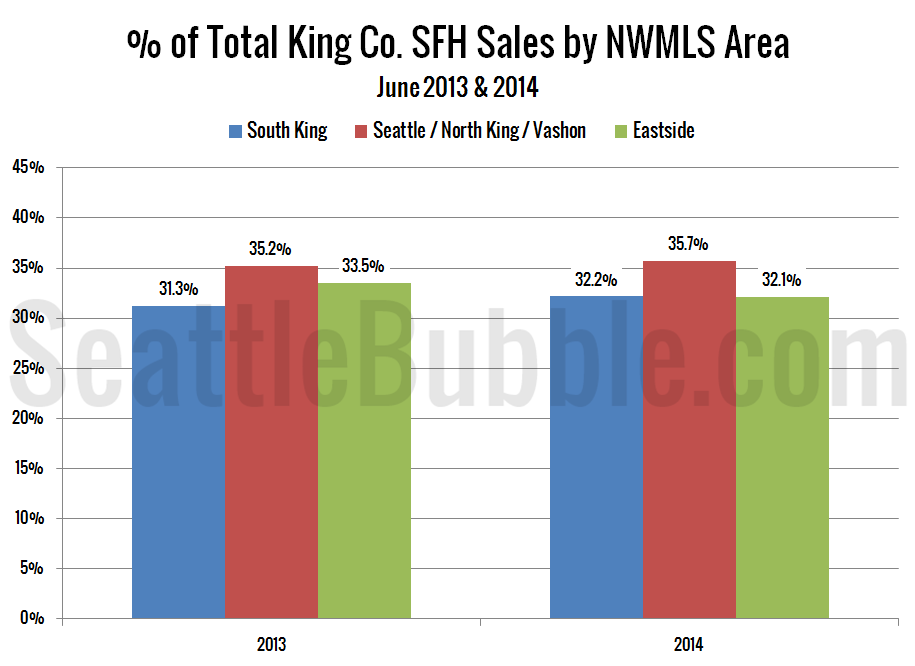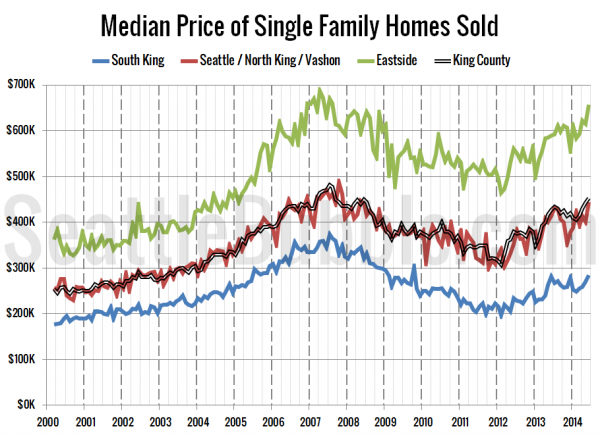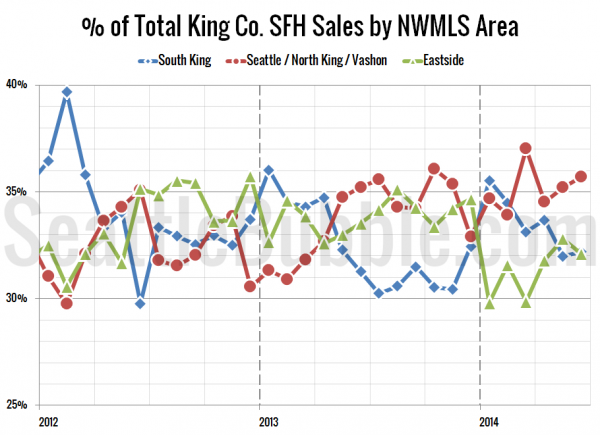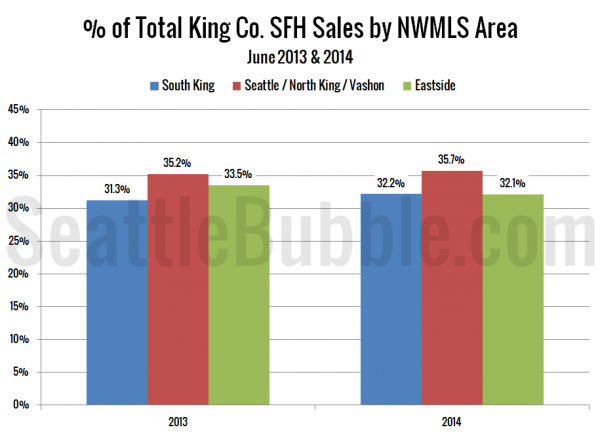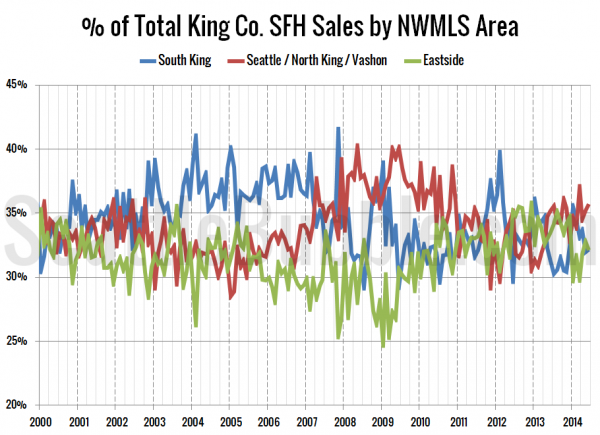It’s time once again to take an updated look at how King County’s sales are shifting between the different regions around the county, since geographic shifts can and do affect the median price.
In order to explore this concept, we break King County down into three regions, based on the NWMLS-defined “areas”:
- low end: South County (areas 100-130 & 300-360)
- mid range: Seattle / North County (areas 140, 380-390, & 700-800)
- high end: Eastside (areas 500-600)
Here’s where each region’s median prices came in as of June data:
- low end: $250,000-$391,225
- mid range: $337,475-$775,000
- high end: $526,000-$1,664,000
First up, let’s have a look at each region’s (approximate) median price (actually the median of the medians for each area within the region).
The median price in all three tiers rose between May and June. The low tier rose 5.2 percent in the month, the middle tier increased 10.6 percent, and the high tier gained 6.8 percent. Meanwhile, the median price in all three tiers is also up year-over-year, but with smaller gains than the month-to-month increases in the low and middle tiers. Here’s how the median prices changed year-over-year. Low tier: up 1.2 percent, middle tier: up 7.3 percent, high tier: up 11.4 percent.
Next up, the percentage of each month’s closed sales that took place in each of the three regions.
The share of sales in Seattle gained some ground in June stolen mostly from the Eastside. Year-over-year sales were up in the low and medium tiers and down in the high tier. Compared to a year ago, sales increased 5.3 percent in the low tier, rose 3.6 percent in the middle tier, and fell 2.1 percent in the high tier.
As of June 2014, 32.2 percent of sales were in the low end regions, 35.7 percent in the mid range, and 32.1 percent in the high end. A year ago the low and mid ranges had less of the share and the high range had more: In June 2013 the low end made up 31.3 percent of the sales, the mid range was 35.2 percent, and the high end was 33.5 percent.
Here’s that information in a visual format:
Finally, here’s an updated look at the percentage of sales data all the way back through 2000:
The middle tier (mostly Seattle proper) has been steadily increasing in sales share over the last year and a half, increasing from 30.6 percent of the sales in December 2012 to 35.7 percent in June. This fits well with my theory that post-bubble homebuying attitudes have buyers leaning more toward the close-in neighborhoods than during the bubble.
